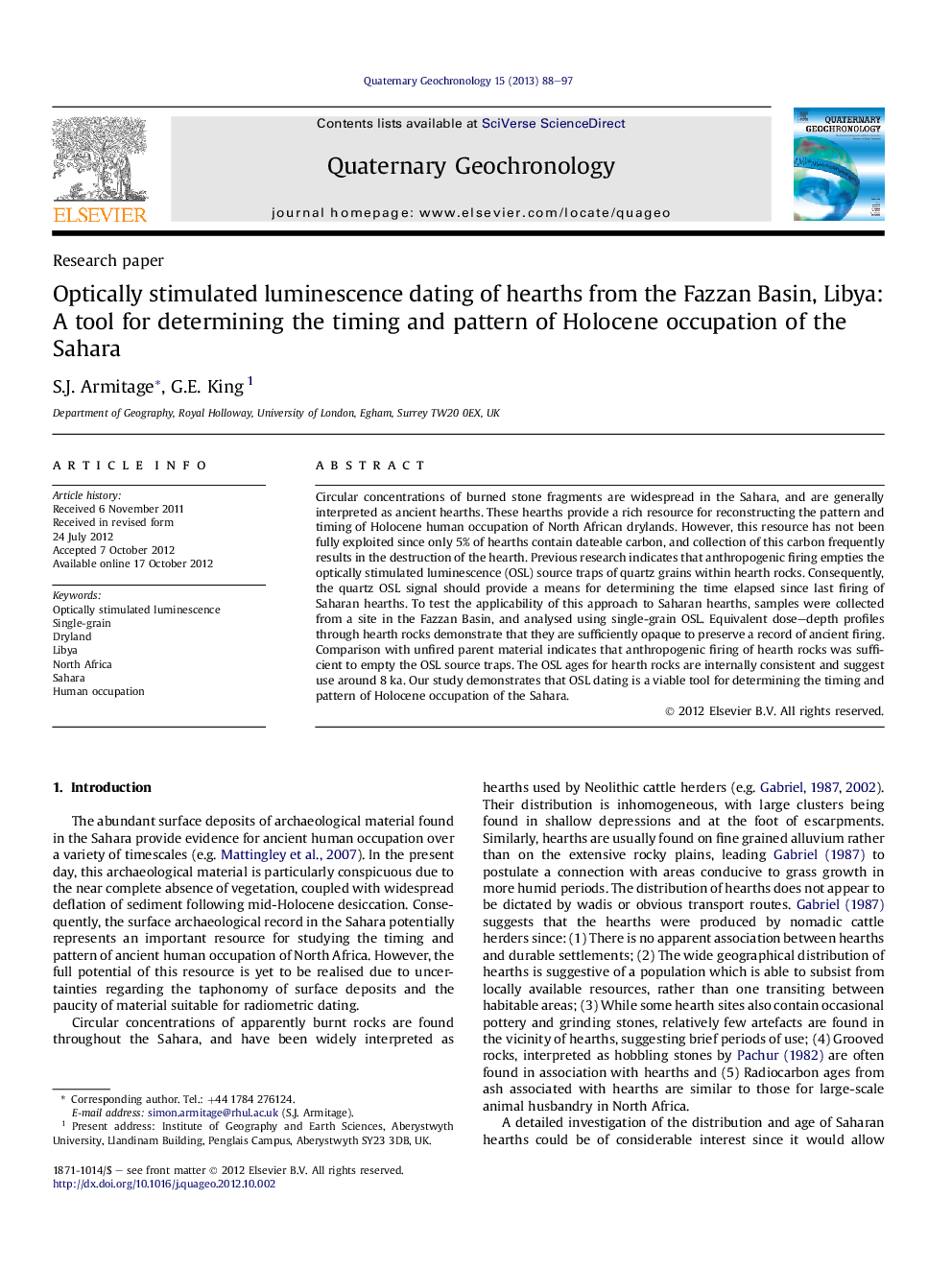| کد مقاله | کد نشریه | سال انتشار | مقاله انگلیسی | نسخه تمام متن |
|---|---|---|---|---|
| 4725074 | 1639861 | 2013 | 10 صفحه PDF | دانلود رایگان |
Circular concentrations of burned stone fragments are widespread in the Sahara, and are generally interpreted as ancient hearths. These hearths provide a rich resource for reconstructing the pattern and timing of Holocene human occupation of North African drylands. However, this resource has not been fully exploited since only 5% of hearths contain dateable carbon, and collection of this carbon frequently results in the destruction of the hearth. Previous research indicates that anthropogenic firing empties the optically stimulated luminescence (OSL) source traps of quartz grains within hearth rocks. Consequently, the quartz OSL signal should provide a means for determining the time elapsed since last firing of Saharan hearths. To test the applicability of this approach to Saharan hearths, samples were collected from a site in the Fazzan Basin, and analysed using single-grain OSL. Equivalent dose–depth profiles through hearth rocks demonstrate that they are sufficiently opaque to preserve a record of ancient firing. Comparison with unfired parent material indicates that anthropogenic firing of hearth rocks was sufficient to empty the OSL source traps. The OSL ages for hearth rocks are internally consistent and suggest use around 8 ka. Our study demonstrates that OSL dating is a viable tool for determining the timing and pattern of Holocene occupation of the Sahara.
► OSL ages for the firing of Saharan hearths are presented.
► Full bleaching of hearth stones by anthropogenic firing is demonstrated.
► Ages are consistent within and between hearths, indicating firing at ∼8 ka.
► Hearth dating allows patterns of Saharan occupation by humans to be determined.
Journal: Quaternary Geochronology - Volume 15, February 2013, Pages 88–97
